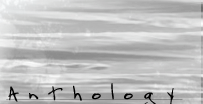Critical Essay: Gary McMannon
By Sage Ricci
Gary McMannon is a Northwest poet whose work has been influenced
by the landscapes he has traveled and lived in, and also the people
who he has met along the way. McMannon uses minimalist language
to put us in the bare bones of a scene and suggest what he finds
there. Rarely does he paint a complete picture, but uses broad
strokes to suggest images that the reader brings his/her own interpretation
to.
“The Guardian” is a poem with strong and clear images
of a northwest landscape seen through eyes that are filled with
grief. The narrator seems pinned down to the ground with grief.
His assertion that “I’ll lie here…till the fog
lifts” tells us that he is in a fog of his own, what we
later understand as grief. That mind “wanders the landscape
like an aimless ghost”. The place of the poem triggers memories
in the narrator, memories of those who have died and been lost.
The narrator is the only one left out of a specific group of people
who perhaps have shared this very place with him. He tells us
he has the responsibility to be and see in this landscape for
those he has lost.
The strong image of the first stanza is cut short by McMannon’s
self reflection, something he does in many of his poems. He pulls
out of the image to tell us who he is within the image.
He does this in his Japanese inspired poem “(Adaptation
of the Tanka)” as well. He uses a form based on the traditional
Tanka form that strings together series of haikus. Unlike traditional
haiku, McMannon inserts himself into most stanzas to comment on
his place in nature. His joy about the beauty he finds there is
evident, and the stanzas that shine most for me are the ones that
let the images speak for themselves.
“Episode XII” is another poem set in a specific but
unspecified place. It is a distillation of a moment, a twilight
encounter of some unnamed Latin or Central American tribal ritual.
The details he gives us are few, but intriguing: costumes, oiled
dancers, masked bird men. This is an important event, the images
are archetypal roles that suggest how tribal society is ritualized.
There is a moment in this poem that is the turning point of the
poem. It is the last two lines where “the people stop and
turn/ as though Quetzlcoztl were near at hand.” This pause
in the breath of the poem stops the dancers and the reader to
make room for divine mystery. This poem embodies the mystery of
the ritual without needing to describe allthe details. McMannon’s
simple technique gives us only the bare essentials, leaves us
looking for more.
Gary McMannon’s poems are an exploration of the places he
inhabits and visits, places both inside and outside himself. His
poems contain an essence of longing for these places, for the
exploration.

